1. Herrerasaurus
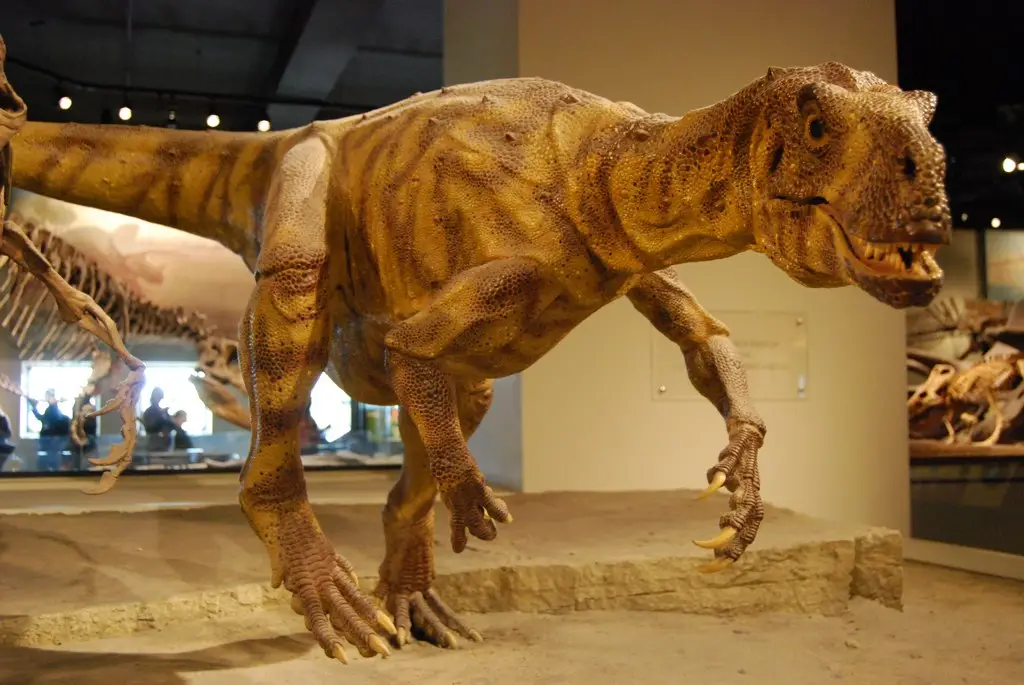
Herrerasaurus, another early dinosaur from the Triassic period, lived around 230 million years ago. It was a large carnivorous dinosaur that could grow up to 6 meters in length, making it one of the first top predators. Herrerasaurus is considered one of the oldest theropods, a group that would later evolve into modern birds. Its fossils were discovered in Argentina, where it roamed the warm, forested landscapes of the late Triassic. Unlike Eoraptor, Herrerasaurus had a more robust body and was a true carnivore, likely preying on other early reptiles. Its sharp teeth and claws suggest that it was an active hunter, although its relatively slow speed compared to later theropods indicates it may have relied on ambush tactics.
Herrerasaurus also had a long tail, which helped with balance and swift movement, a feature common in later predatory dinosaurs. Despite its relatively small brain, According to a study published in the Journal of Vertebrate Paleontology, Herrerasaurus was well-adapted to its environment and would have been a formidable predator in its time. The discovery of Herrerasaurus helped fill in the gaps between earlier reptiles and the dinosaurs that would later dominate the Mesozoic era. Its fossils are some of the most important pieces of evidence for understanding the early evolution of dinosaurs in the Triassic period.
2. Eoraptor

One of the earliest known dinosaurs, Eoraptor is considered a key figure in understanding the origin of dinosaurs. Living around 231 million years ago, during the late Triassic period, Eoraptor was a small, bipedal carnivore that likely scavenged for food. It was about the size of a modern-day dog, measuring around 1 meter in length. According to Paleontologist Paul Sereno, its fossils were discovered in what is now Argentina, in the Ischigualasto Formation, a rich site of Triassic fossils. Eoraptor had a slender body, sharp teeth, and a long tail, making it an efficient predator for its size. Its exact diet is still debated, as some evidence suggests it might have been an omnivore, eating both plants and small animals.
The dinosaur’s fossilized remains reveal a mix of primitive and advanced features, showing it as a transitional species. Eoraptor is believed to be one of the first dinosaurs to develop the characteristic bipedal stance, which would become a hallmark of later dinosaur evolution. Its discovery provided important insights into the early stages of dinosaur evolution, helping scientists understand the origins of other dinosaur groups. Despite its small size, Eoraptor holds a significant place in the history of life on Earth as one of the pioneers of the dinosaur lineage.
3. Plateosaurus
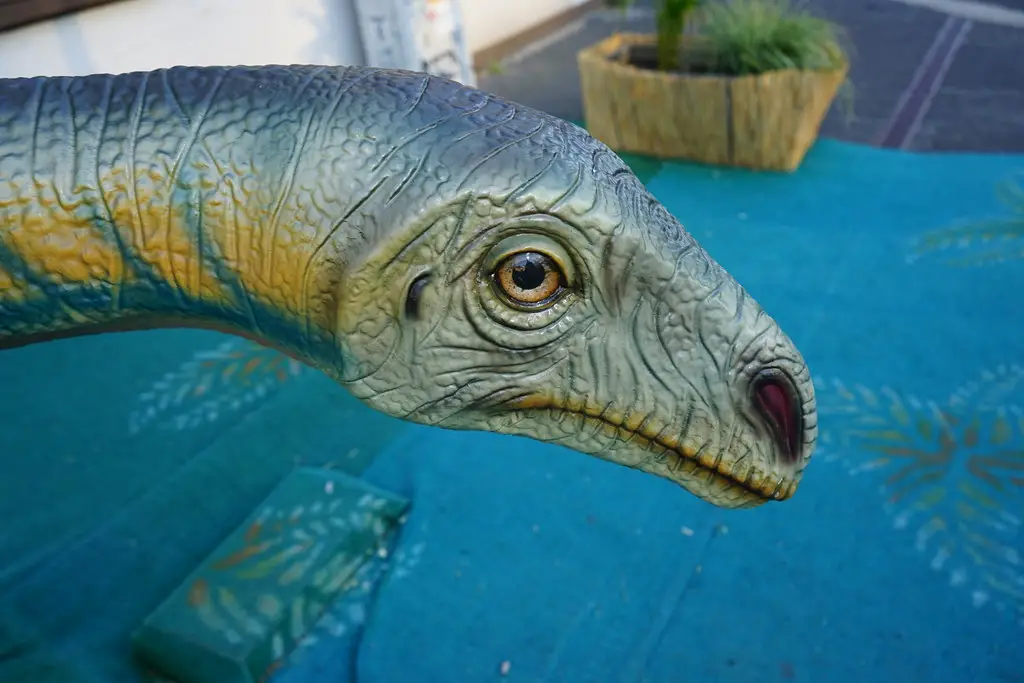
Plateosaurus is one of the earliest known herbivorous dinosaurs, dating back to around 214 million years ago, in the Late Triassic. It grew to about 4-10 meters long and was an early member of the Sauropodomorpha, the group that would eventually include massive long-necked giants like Brachiosaurus. Unlike the earlier, smaller carnivorous dinosaurs, Plateosaurus was a plant eater, with a beak-like mouth and leaf-shaped teeth suited for browsing on plants. Its long neck and tail allowed it to reach high vegetation, and it may have used its powerful legs to walk on two or four limbs.
According to a study published in Science Direct, fossils of Plateosaurus have been found in Europe, primarily in what is now Germany and Switzerland, where it likely lived in a warm, semi-arid environment. This dinosaur’s body structure suggests it was a relatively slow-moving animal, although it had strong hind legs that could be used for defense or for quick bursts of speed if needed. Plateosaurus was one of the first large herbivores to appear in the dinosaur world, and it would influence the evolution of later plant-eating dinosaurs. Its fossilized remains indicate that it lived in herds, which likely provided safety in numbers from predators. Plateosaurus is significant because it represents a shift in the ecosystem, with herbivorous dinosaurs becoming more prominent. This dinosaur laid the groundwork for the massive, long-necked herbivores that would come millions of years later.
4. Coelophysis
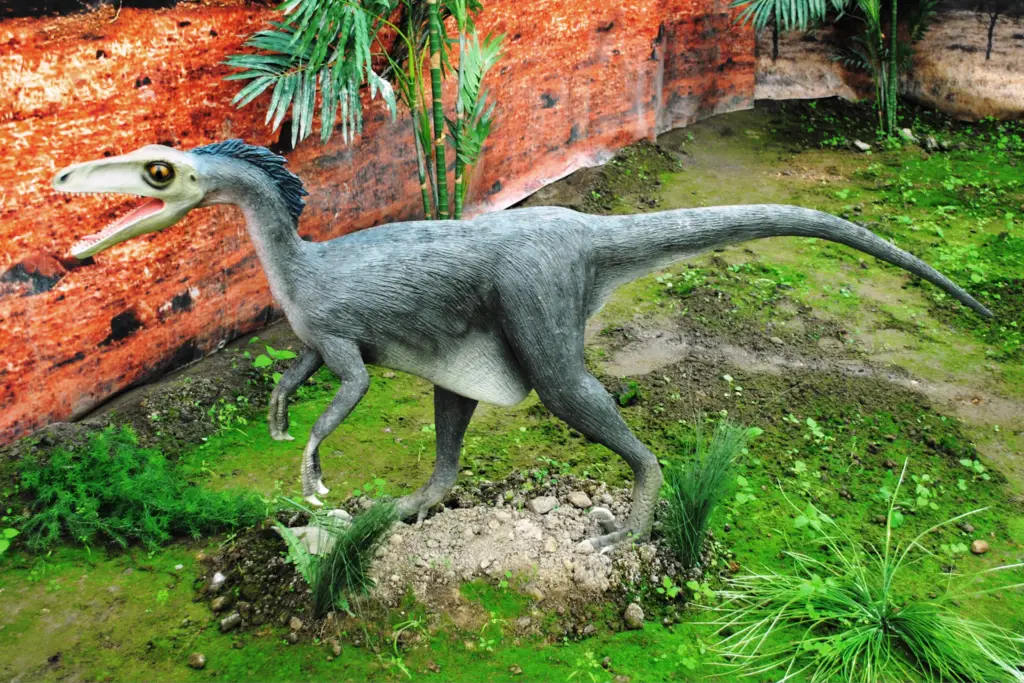
According to the American Museum of Natural History, Coelophysis was one of the first true theropod dinosaurs, living around 210 million years ago during the Late Triassic. It was a small, agile carnivore, measuring only about 3 meters long. Coelophysis had a slender body, long legs, and a long tail, making it well-suited for fast movement and hunting. Its fossils have been found in North America, particularly in the southwestern United States, where it lived in a warm, semi-arid environment. Despite its small size, Coelophysis was a skilled predator, likely hunting in packs to take down larger prey or scavenge from larger predators. Its teeth were sharp and serrated, designed for slicing through flesh.
Coelophysis was one of the earliest dinosaurs to exhibit a fully bipedal stance, a characteristic that would become more common in later theropods. Interestingly, some fossil evidence suggests that Coelophysis may have exhibited cannibalistic behavior, as fossils of young individuals have been found in the stomachs of adults. This dinosaur’s relatively small size and agility made it an important part of the ecosystem, preying on smaller reptiles, amphibians, and even early mammals. The discovery of Coelophysis fossils has provided key insights into the development of predatory behavior in early dinosaurs, helping to shape our understanding of theropod evolution.
5. Staurikosaurus
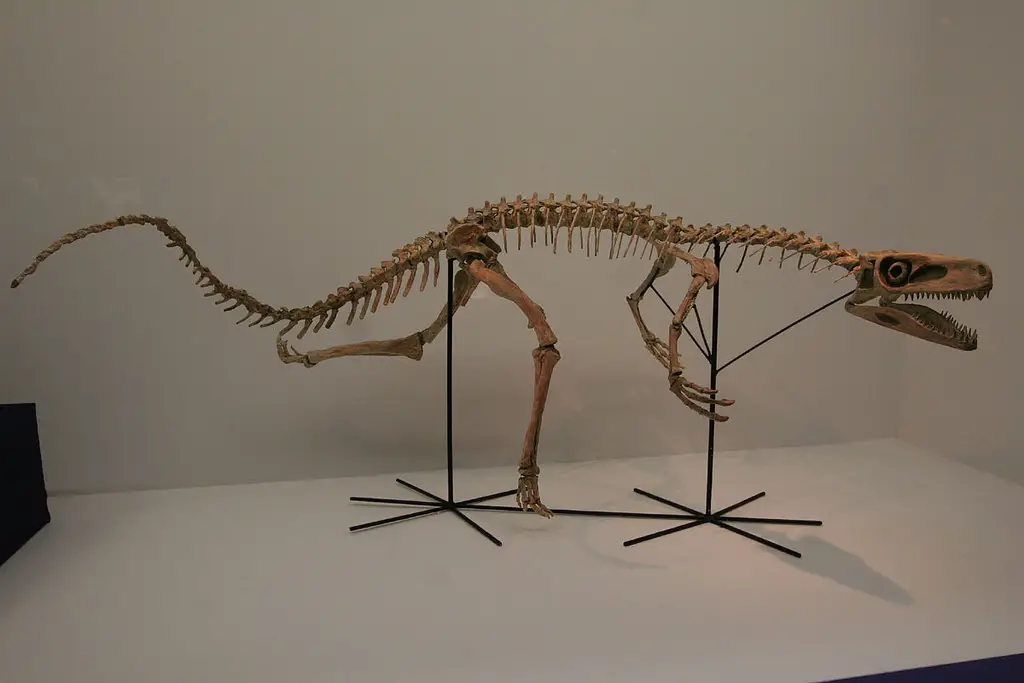
Staurikosaurus was one of the earliest known theropod dinosaurs, living about 225 million years ago during the Late Triassic. It was a small, carnivorous dinosaur that measured approximately 2-3 meters in length. Staurikosaurus had a slender body, with long legs and a tail, which made it an agile predator. It is believed to have hunted small prey, possibly other reptiles or early mammals, in the forests and open plains of what is now Brazil. Its fossilized remains suggest it had sharp teeth and claws, indicating that it was well-adapted for catching and eating smaller animals.
Despite its small size, Staurikosaurus was likely an efficient hunter, using speed and agility to catch its prey. The dinosaur’s bipedal stance, with its long tail for balance, was typical of many theropods, setting the stage for later, larger theropod species. Fossils of Staurikosaurus are relatively rare, but the ones found offer significant insights into the evolution of early theropods. The dinosaur’s discovery helped scientists understand the early stages of theropod development and the adaptation of bipedalism in carnivorous dinosaurs. Staurikosaurus is a crucial part of the evolutionary tree of theropods, showing the transition from early reptilian forms to the dinosaurs that would later dominate the planet.
6. Anchisaurus

Anchisaurus was an early herbivorous dinosaur that lived during the Late Triassic, around 200 million years ago. It was a small, four-legged dinosaur, measuring about 2.5 meters long. Its fossils have been found in North America, and it is believed to have lived in a forested environment where it likely fed on low-lying plants and shrubs. Anchisaurus is considered a member of the early sauropodomorphs, a group of herbivorous dinosaurs that eventually gave rise to the massive sauropods. Its body was built for slow, deliberate movement, with relatively short legs and a long tail.
Anchisaurus had leaf-shaped teeth suited for stripping and chewing plant material. Its small size and relatively simple body structure suggest it was not as well-protected from predators as larger dinosaurs, likely relying on speed and agility to avoid danger. Anchisaurus is an important species in understanding the early evolution of herbivorous dinosaurs, showing the transition from smaller plant-eaters to the massive sauropods that would dominate the Jurassic period. This dinosaur provides critical insight into the early stages of herbivory and how it shaped the evolution of dinosaurs during the Triassic period.
7. Massospondylus
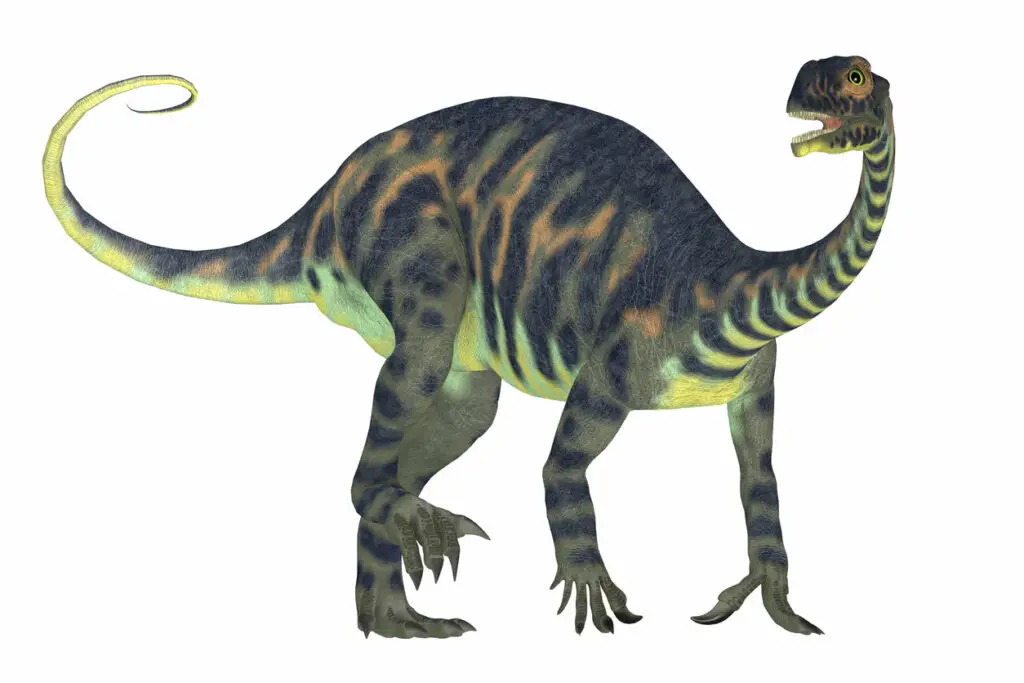
Massospondylus was one of the earliest dinosaurs to appear in the early Jurassic period, around 200 million years ago. It was a small, plant-eating dinosaur that grew to about 4 meters long. Massospondylus had a long neck and tail, with a relatively small head and leaf-shaped teeth, suggesting it fed on ferns, cycads, and other low-lying plants. It had a body built for bipedal movement, with long, powerful hind legs and a relatively small body compared to its long neck. Massospondylus fossils have been found in what is now South Africa, indicating that it lived in a warm, semi-arid environment with seasonal rain.
This dinosaur likely lived in herds, which provided safety from predators like Coelophysis and other early carnivores. The long neck of Massospondylus was an early precursor to the long-necked dinosaurs that would dominate later periods. Fossils of Massospondylus have been instrumental in understanding the evolution of herbivorous dinosaurs, as it is one of the first known examples of a long-necked herbivore. Its discovery has helped shape the understanding of early dinosaur communities and the beginning of large herbivorous lineages.
8. Liliensternus
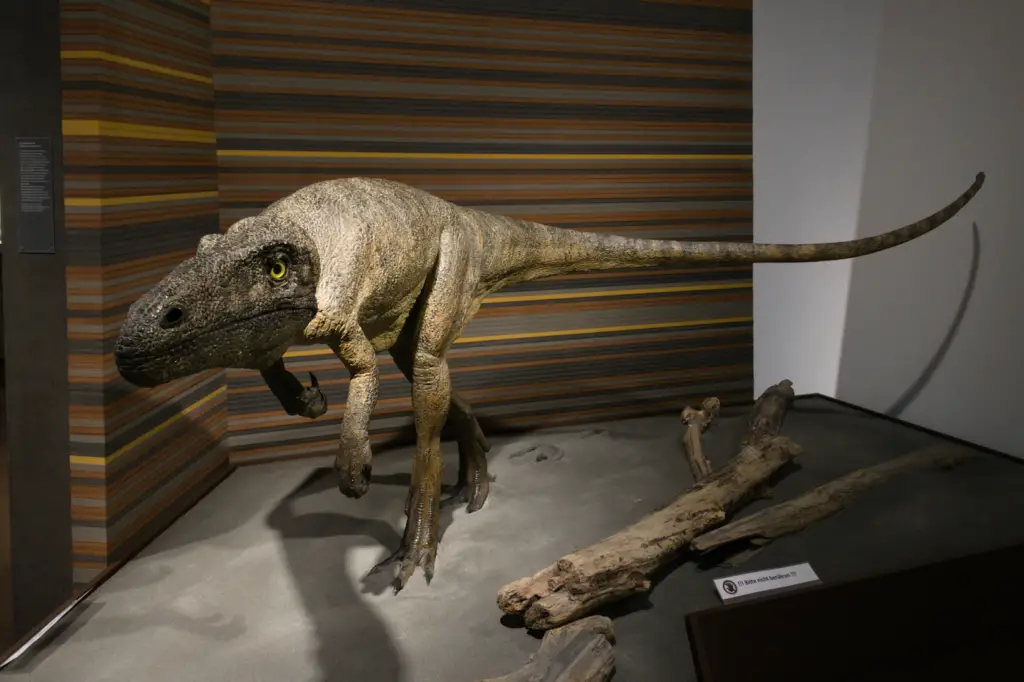
Liliensternus was a small carnivorous dinosaur that lived during the Late Triassic period, around 210 million years ago. It measured about 3 meters long and was an early member of the theropod group. Liliensternus had a slim, elongated body with a long tail, which helped it maintain balance while running. Its teeth were sharp and serrated, indicating it was a predator that hunted smaller animals, such as reptiles and amphibians. Fossils of Liliensternus have been found in Europe, particularly in what is now Germany, where it would have lived in a warm, temperate climate.
Its bipedal stance and agility suggest it was an active hunter, likely chasing down prey with quick bursts of speed. Liliensternus was an early example of a theropod that exhibited features later seen in larger predators, such as the theropods of the Jurassic period. The discovery of Liliensternus has provided valuable insight into the early evolution of theropods, showing how these dinosaurs developed their carnivorous traits. Despite its relatively small size, Liliensternus was a key player in the early food chain, setting the stage for larger, more powerful theropods that would evolve later.
9. Tanycolagreus
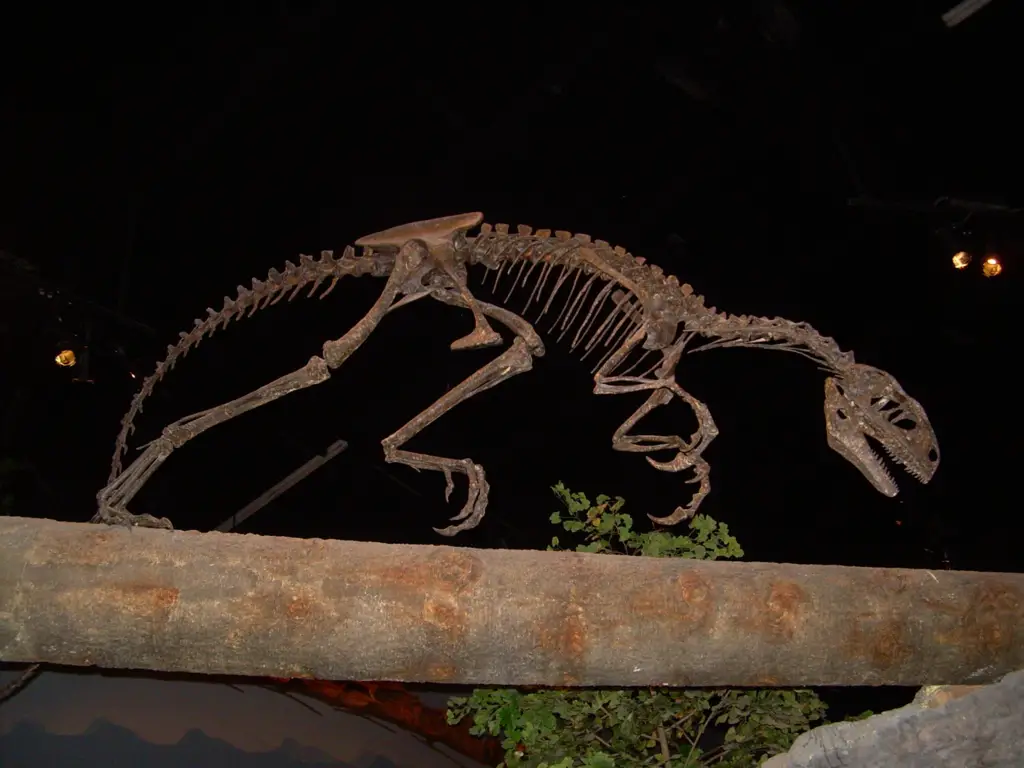
Tanycolagreus was an early theropod dinosaur that lived about 190 million years ago during the early Jurassic period. This small, bipedal predator measured about 2 meters long. Tanycolagreus had a slender build and was likely a fast-moving predator, with long legs and a sharp, tooth-lined jaw suited for catching smaller prey. It is believed to have hunted insects, small vertebrates, and perhaps even smaller dinosaurs. Fossils of Tanycolagreus have been found in North America, specifically in what is now Utah, where it lived in a forested environment.
The dinosaur’s teeth were sharp and serrated, ideal for slicing through meat, and its lightweight frame made it an efficient hunter. Tanycolagreus is important because it represents a stage in the evolution of theropods, showing the diversification of carnivorous dinosaurs. This species was a forerunner to later, larger theropods like Allosaurus and Tyrannosaurus rex. The discovery of Tanycolagreus has provided crucial information about the early days of predatory dinosaurs, offering insights into their behavior and ecological role during the Jurassic period.
10. Dilophosaurus
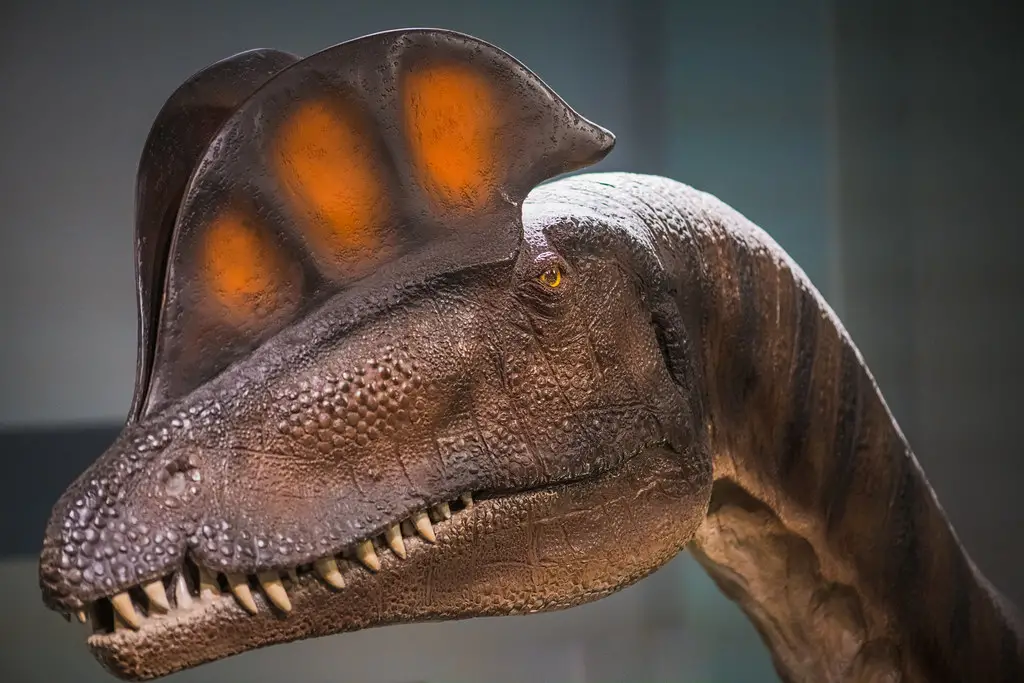
Dilophosaurus was one of the earliest large theropod dinosaurs, living around 193 million years ago during the Early Jurassic period. It grew up to 7 meters long and was known for its distinctive double-crested head. This carnivorous dinosaur had a long, narrow skull and sharp teeth, which suggest it preyed on smaller animals, possibly early mammals or smaller dinosaurs. Dilophosaurus is believed to have hunted in packs, using its crests for communication or display, potentially to attract mates or ward off competitors.
The fossils of Dilophosaurus have been found in North America, particularly in the southwestern United States. This species is significant because it represents one of the earliest examples of large, predatory theropods. Despite its large size for its time, Dilophosaurus had relatively lightweight limbs, which suggest it was a fast and agile predator. The dinosaur’s crests have puzzled paleontologists, and there are theories that they may have been used for social signaling or as a way to distinguish individuals. Dilophosaurus represents a critical point in theropod evolution, bridging the gap between earlier, smaller carnivores and later, more powerful predatory dinosaurs.
11. Camptosaurus
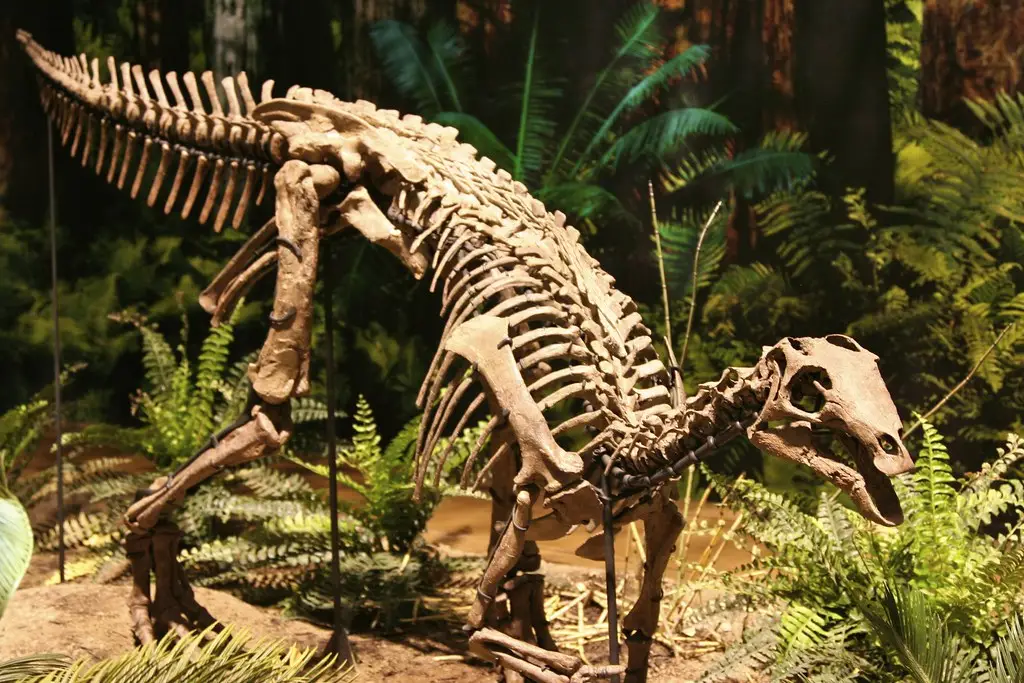
Camptosaurus was an herbivorous dinosaur that lived during the Late Jurassic period, around 150 million years ago. It was a small to medium-sized dinosaur, growing up to 4 meters long. Camptosaurus had a robust body and a relatively small head, with leaf-shaped teeth suited for a herbivorous diet. It likely lived in herds, feeding on ferns, cycads, and other low-lying plants in the lush, warm environment of the Jurassic. Camptosaurus is known for its ability to walk both on two legs and four, depending on the situation, which was a characteristic seen in several early herbivores. It is considered one of the first dinosaurs to exhibit this kind of facultative bipedalism, a behavior that would become more common in later herbivores.
Fossils of Camptosaurus have been found in North America, where it was an important part of the ecosystem. Despite its relatively small size compared to later Jurassic herbivores, Camptosaurus played a significant role in the plant-eating dinosaur line. The discovery of Camptosaurus provided important insights into the diversification of herbivorous dinosaurs and their role in shaping the Jurassic ecosystems.


